|
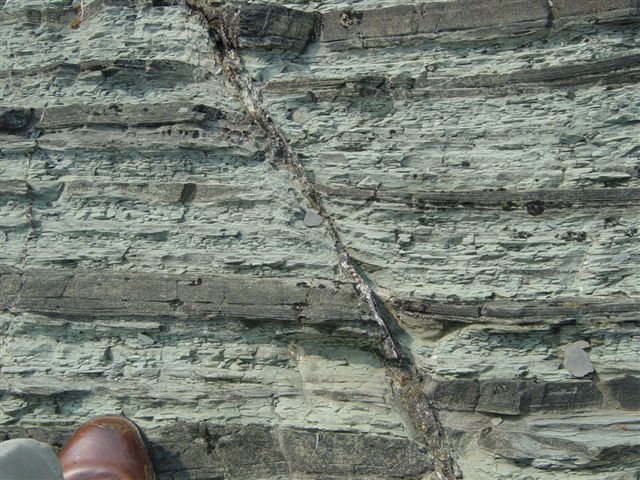 |
A typical series of alternating dark grey, hard sandy bands and lighter coloured soft muddy bands in the Ardwell Flags. The beds are close to vertical. Match up of beds across the fault is not obvious, but turn of the beds close to the fault plane indicates movement to be dextral (to the right as viewed from opposite side). |
| |
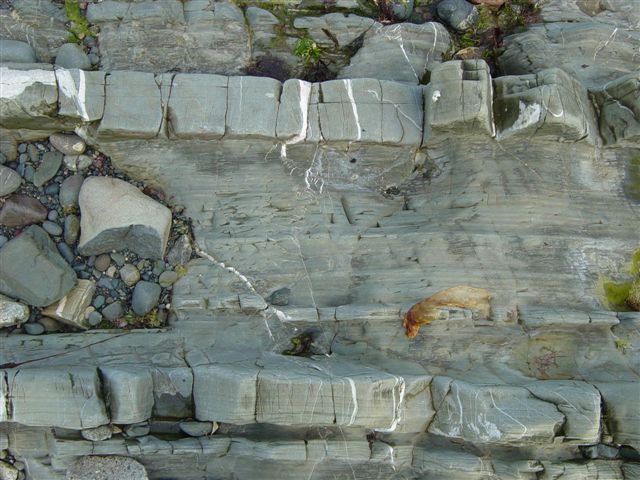 |
A fine example of beds of
alternating hardness - two prominent hard bands at top and bottom
are separated by a soft muddy layer. A vein of white calcite or
quartz intruded the beds before lithification - it passes
straight through the competent sandy hard band, but was squeezed out
during lithification and compression of the incompetent muddy layer. |
| |
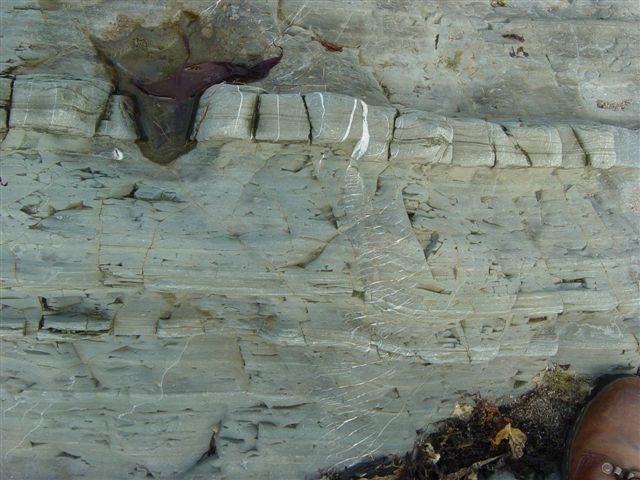 |
Another fine example of vein
behaviour in incompetent muddy layers - the white vein has been
stretched into a series of thin zigzags. |
| |
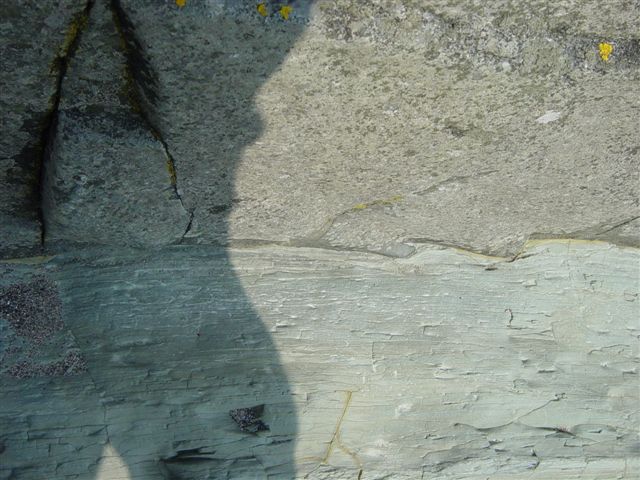 |
This is believed to be an example
of flute marks. The lower muddy layer was laid down first, and
was followed by the upper sandy layer before the mud had hardened.
This caused eddies to form on the sea bed, which become shallower
and wider down-current. The current movement was therefore
from right to left as seen here. |
| |
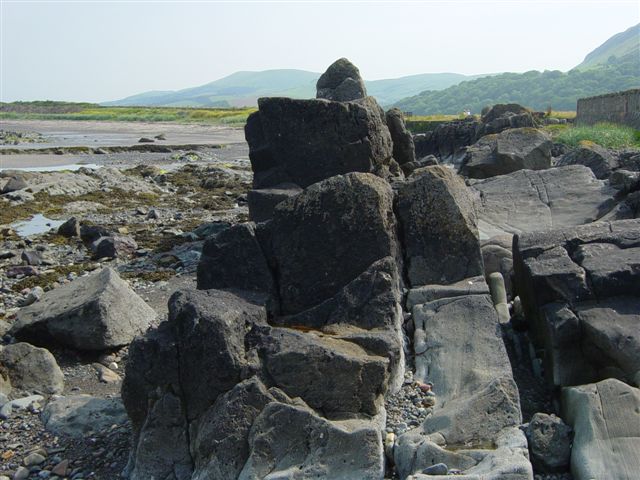 |
Graded bedding in near vertical
sandstone units. The unit at centre right can be seen to grade
from coarse to fine from right to left, so the succession youngs in
that direction, and is therefore slightly overturned. |
| |
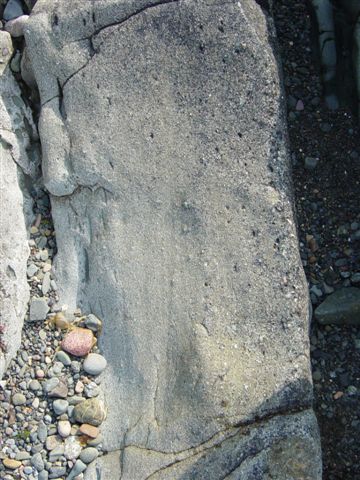 |
Detail of the graded bed described
above, shown in the same orientation. When a pulse of material
of various grades falls to the sea floor, the coarsest material will
settle first followed progressively by finer material, so the bed
youngs upwards (from right to left as seen here). |
| |
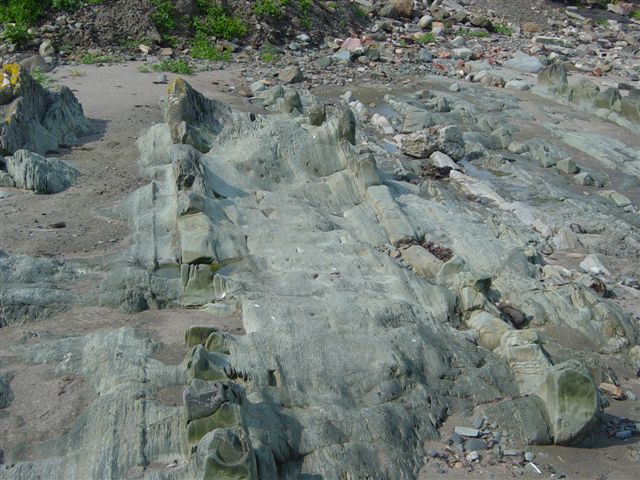 |
A series of turbidite units, each
having a sharp base (at left) and fining progressively upwards
(towards the right). Recent erosion carves out the soft,
bluish muddy layers more easily than the coarser, sandy layers. |
| |
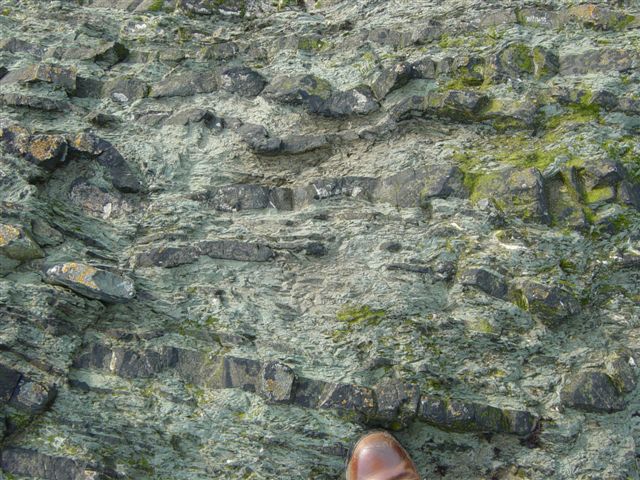 |
When successive beds have a high
competence contrast, as between these dark sandy layers and the
intervening muddy layers, deformation during lithification may cause
the the competent layers to stretch out, or separate into lozenge
shaped pieces known as boudins (french = sausage). |
| |
TOP |
NEXT FIELD TRIP > |